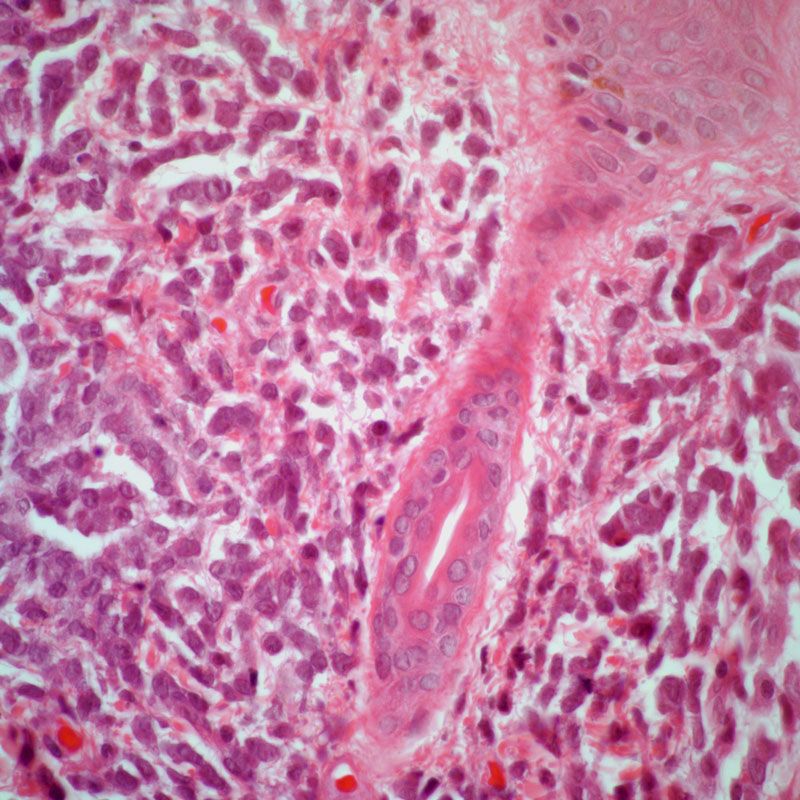ATRA/Chemo Does Not Improve OS/Toxicity in NPM1+ Acute Myeloid Leukemia
Adding all-trans retinoic acid to chemotherapy does not appear to improve complete remission rates compared with chemotherapy alone in patients with NPM1-mutated acute myeloid leukemia.
“Although the preclinical rationale for examining the addition of ATRA in AML was attractive we were not able to show consistently a beneficial effect across different patient populations,” according to the study authors.

Combining all-trans retinoic acid (ATRA) with non-intensive chemotherapy produced worse toxicity and overall survival (OS) compared with chemotherapy alone in patients with newly diagnosed, NPM1-mutated acute myeloid leukemia (AML), according to findings from a phase 3 study (NCT01237808) published in Scientific Reports.
The median OS was 5.0 months for patients receiving ATRA plus chemotherapy compared with 9.2 months in those receiving chemotherapy alone (P = .023). Additionally, the OS rate in each respective arm was 23% vs 38% at 1 year and 7% vs 10% at 2 years. Investigators highlighted that treatment with ATRA, a hematopoietic cell transplantation-comorbidity index (HCT-CI) of higher than 2, a higher white blood cell count, and older age conferred significantly worse OS outcomes based on multivariate analysis.
Of those who achieved a complete remission (CR) or CR with incomplete count recovery (CRi; n = 50), 45 patients experienced relapse and 2 patients who received ATRA died during CR/CRi. Investigators observed no significant differences between treatment arms with respect to cumulative incidences of relapse (CIR; P = .65) and death in CR/CRi (P = .14). There was no significant effect on event-free survival (EFS) or CIR with the addition of ATRA to chemotherapy based on multivariate analysis.
“Although the preclinical rationale for examining the addition of ATRA in AML was attractive we were not able to show consistently a beneficial effect across different patient populations,” the study authors wrote. “However, the preclinical rationale, as well as recently published clinical data underlines the effect of targeted BCL-2 inhibition in AML and at least based on data of a cohort study in AML with mutated NPM1.”
A total of 144 patients with NPM1 mutant AML were assigned 1:1 to receive chemotherapy alone (n = 72) or in combination with ATRA (n = 72). Chemotherapy consisted of 20 mg of cytarabine per day subcutaneously on days 1 to 7 plus etoposide or etoposide phosphate at 50 mg/m2 per day intravenously on days 1 to 3 of cycles 2 to 6 followed by an increased dose of 100 mg per day on days 1 to 3. Investigators administered ATRA at 45 mg/m2 per day on days 8 to 28 followed by reduced doses of 45 mg/m2 on days 8 to 10 and 15 mg/m2 on days 11 to 28 following toxicity.
The trial’s primary end point was OS. Secondary end points included EFS, CR/CRi, CIR, death in CR/CRi, and treatment-related toxicity.
Patients older than 60 years with newly diagnosed AML including de novo AML, secondary AML with a history of myelodysplastic or myeloproliferative disorder, and therapy-related AML following treatment of a previous malignancy were eligible for enrollment on the trial.
The median patient age was 76.8 years (range, 63.8-91.8), and most patients were male (51.4%). Additionally, most patients had de novo AML (87.5%), a World Health Organization performance status of 0 or 1 (61.8%), and normal karyotype (78.2%). Investigators reported that baseline characteristics were balanced between the ATRA and chemotherapy alone arms.
Overall, 18.1% of patients treated with ATRA and 8.5% of those receiving chemotherapy alone experienced early or hypoplastic death within the first 2 treatment cycles (P = .09). Starting from cycle 2 of treatment, 59% and 32% of patients in each respective arm experienced infections, which was statistically significant in cycle 2 (P = .01). Investigators reported a higher frequency of cardiac adverse effects in patients receiving ATRA compared with those receiving chemotherapy alone (P = .06).
Reference
Schlenk RF, Weber D, Krzykalla J, et al. Randomized phase-III study of low-dose cytarabine and etoposide + /- all-trans retinoic acid in older unfit patients with NPM1-mutated acute myeloid leukemia. Sci Rep. 2023;13(1):14809. doi:10.1038/s41598-023-41964-y